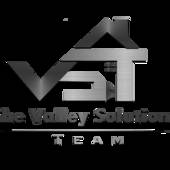This is a great article from Realty Times that discusses the pros and cons of Old Homes VS New Homes.
For a society that likes shiny new things, the latest research could foreshadow a surprising trend -- homebuyers choosing older homes over new construction.
Why? The prices and operating costs can vary widely. In August 2014, the median sales price of new homes sold was $275,600, while the median price of older homes was $219,000. Taxes and insurance may cost less for an older home.
For a society that likes shiny new things, the latest research could foreshadow a surprising trend -- homebuyers choosing older homes over new construction.
Why? The prices and operating costs can vary widely. In August 2014, the median sales price of new homes sold was $275,600, while the median price of older homes was $219,000. Taxes and insurance may cost less for an older home.
Retro charm: Whether you prefer mid-century modern or Victorian shabby chic, older homes have personalities and features that are a lot of fun to decorate. You can also update an older home a little at a time instead of paying a big mortgage to have it all at once.
More available: Since the Great Recession, existing homes have been much less expensive than new homes, and builders have had a hard time getting market share traction. For example, the sales of existing homes in August were seasonally adjusted at 5.05 million units. Sales of newly built, single-family homes were 412,000 units, which is low by historical standards.
Stricter financing: A new home with a higher price tag may be harder to finance. Stricter lending requirements mean that borrowers have to stay within traditional guidelines of affordability, including down payments and debt to income ratios. An affordable home should not take more than approximately 30% of household gross income to cover mortgage notes, taxes and insurance.
Wealth effect is gone: Despite recent gains in the stock market, people simply don't feel as wealthy or as confident. In 2010, returns were about where they were in 2000, meaning a lost decade of wealth-building in stocks and bonds, as well as housing equity. Four years later, many investors have yet to make up their losses.

Higher building costs:
National Association of Home Builder's (NAHB) research shows lumber and wood products account for 15% of the cost of construction for a single-family home. Lumber prices are 27% above their average 2011 levels. NAHB economists estimate that a 10% increase in the price of framing lumber per 1,000 board feet adds approximately $660 to the price of an average new home.
Even a small change in home prices or interest rates can determine whether homebuyers can buy a home. A 2012 priced-out analysis done by NAHB found that a $1,000 increase in new home prices from $225,000 to $226,000 eliminates 232,447 households from being able to afford the same home. A 10% cost increase in the average wholesale price of framing lumber would mean that about 160,000 families would not be able to qualify for a mortgage on an average first-time home.
Commutes more expensive: Most new homes are built where land costs are cheaper, well outside the inner city. The Department of Energy expects commuters to pay an average $700 more annually in gasoline costs to live in the suburbs. The cost of commuting could make older homes in the inner city, walking communities, and homes near public transportation more attractive to homebuyers.
Where new homes beat older homes: Because it's easier to build green than to retrofit, new homes have the advantage over older homes when it comes to energy efficiency. Sixty-eight percent of homebuilders say the home of 2015 will have more energy-efficient features such as insulated windows and water-efficient fixtures, and Energy-Star-rated appliances, heating and cooling systems.
Whether homebuyers choose existing or new homes, one thing is certain- they can't go wrong either way. In an inflationary environment, buying a home is one of the best hedges against rising rents and higher building costs down the road.
Has this helped you decide what type of home you want? You can start your home search by clicking on the homes below.
~Garner Real Estate Team
Click here for all the results












Comments(0)